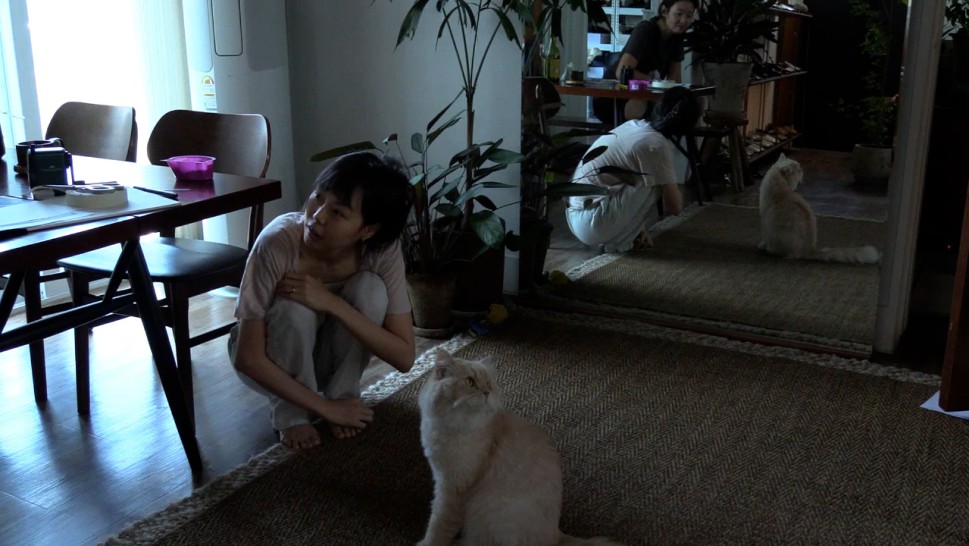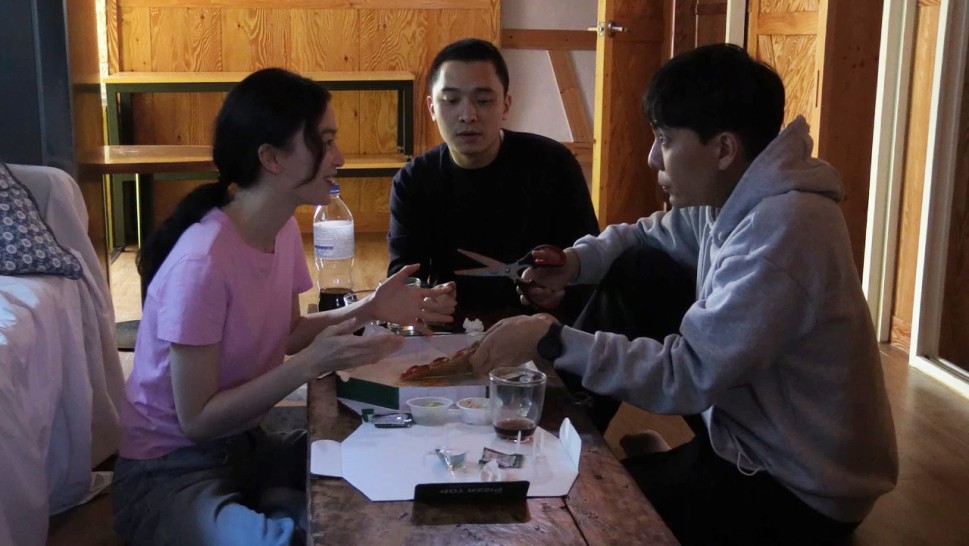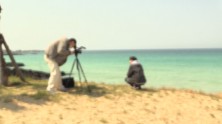


This Is Us. Two Films by Hong Sangsoo
With his twenty-ninth and thirtieth features, South Korean maverick Hong Sangsoo (b.1960) continues to pare down his threadbare aesthetic without sacrificing the subtly experimental edge that has kept his output fresh for over a quarter of a century. At a glance fairly familiar tales of creative stagnation and existential angst, both in water and In Our Day find the director quietly upending expectations in unique ways.
Set on a small island in the Korean Strait, in water follows a first-time filmmaker whose process resembles Hong’s: each morning, after brainstorming the day’s scenes, he searches for locations with his cameraman and actress, shooting only when and if inspiration strikes. Otherwise, the trio’s time is spent puttering around the picaresque port town in a spell of collective ennui, snacking, smoking, and, yes, occasionally drinking as they discuss their divergent artistic philosophies. In a playfully radical touch—one apparently inspired by Hong’s worsening eyesight—he shoots a majority of the film’s scenes out of focus, simultaneously situating the viewer in an appropriately clouded headspace and creating an impressionistic visual palette not unlike that of the director’s frequently cited favorite, Paul Cézanne. In lieu of his typical narrative gamesmanship, this shrewd stylistic coup marks in water as arguably Hong’s most delicate and transporting work to date.
Equally melancholy but more rigorous, In Our Day nods at a very Hongian structural conceit—a pair of seemingly unrelated plot lines with slippery character convergences—but, rather than neatly tie up its various threads and ambiguities, instead calls on the viewer to reconcile its thematic parallels and narrative echoes. Told in alternating fashion, the film’s two storylines center on, respectively, a disillusioned former actress spending time at an old friend’s apartment, and an alcoholic poet who is visited by a pair of young admirers. In each, casual conversation over bowls of ramen begets intimate reflections on creativity and inspiration (or lack thereof), linking the two central characters in spirit, if not on a deeper level. As with in water, a simple formal gambit yields rich dividends in In Our Day, just as an unassuming dramatic device—a song shared between ex-lovers in the former; a lost cat poignantly named Us in the latter—can convey profound meaning. – Jordan Cronk








